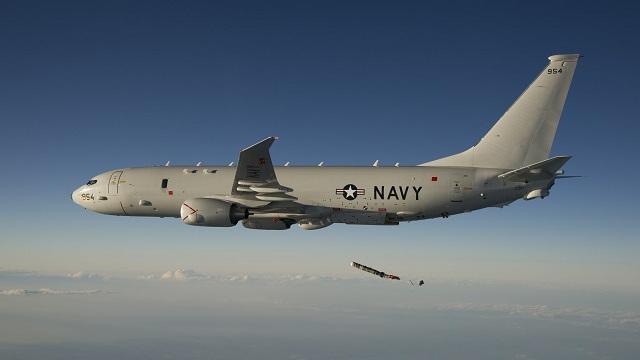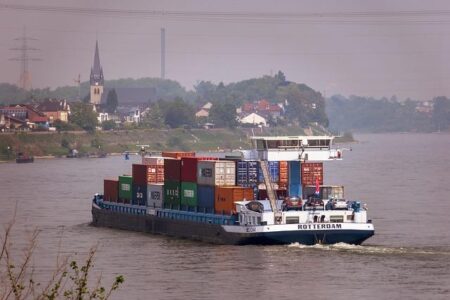Boeing has officially delivered the first P-8A Poseidon maritime patrol aircraft to Germany, marking a significant milestone in the country’s naval aviation capabilities. The state-of-the-art P-8A, designed for anti-submarine warfare, reconnaissance, and maritime surveillance, will enhance Germany’s ability to monitor and secure its maritime interests. This delivery represents not only a key advancement for the German Navy but also a deepening of defense cooperation between Germany and the United States.
Boeing Completes Historic Delivery of First P-8A Poseidon to German Navy
The German Navy has officially enhanced its maritime capabilities with the arrival of its first P-8A Poseidon, marking a significant milestone in the country’s defense modernization efforts. Boeing’s state-of-the-art maritime patrol aircraft combines advanced anti-submarine warfare, anti-surface warfare, and intelligence, surveillance, and reconnaissance (ISR) functions into one versatile platform. This delivery not only reflects Germany’s commitment to strengthening NATO’s maritime security but also underscores Boeing’s growing footprint in the European defense market.
Key features of the P-8A Poseidon for the German Navy include:
- Extended range and endurance for long-duration patrols
- Integrated sensors and communication systems for multi-domain operations
- Capability to deploy sonobuoys and torpedoes for sub-surface engagements
- Robust air-to-surface missile and torpedo armament options
| Specification | Details |
|---|---|
| Max Range | 1,200 nautical miles |
| Crew Size | 9 personnel |
| Top Speed | 490 knots |
| Sensor Suite | Radar, ESM, Acoustic |
Enhanced Maritime Surveillance Capabilities Offered by the P-8A Poseidon Platform
The P-8A Poseidon redefines maritime surveillance with its state-of-the-art sensor suite, significantly enhancing situational awareness over vast oceanic expanses. Equipped with advanced radar systems and acoustic sensors, the platform excels in detecting, classifying, and tracking submarines and surface vessels under varying environmental conditions. Additionally, its integration of real-time data links and satellite communications ensures seamless connectivity with allied naval forces, boosting collaborative maritime domain awareness and response capabilities.
Beyond its superior detection equipment, the Poseidon offers unmatched versatility through a combination of payload capacity and mission endurance. Its armament options, including anti-submarine torpedoes, anti-ship missiles, and depth charges, provide a robust offensive edge. The aircraft’s operational parameters are complemented by sophisticated onboard processing systems, enabling rapid analysis and decision-making in dynamic threat environments.
| Feature | Capability | Benefit |
|---|---|---|
| AN/APY-10 Radar | Multi-mode surveillance | Detects surface and subsurface targets |
| Acoustic Sensors | Passive and active sonar | Enhanced submarine tracking |
| Armament Flexibility | Torpedoes, missiles, depth charges | Comprehensive combat potential |
| Communication Systems | Data links and satellite comms | Real-time allied coordination |
- Extended mission endurance: Over 12 hours of continuous patrol ability.
- Advanced onboard processing: Immediate threat analysis and tactical response.
- Global interoperability: Seamless integration with NATO and allied assets.
Recommendations for Integrating the P-8A into Germany’s Naval Operations and Training Programs
To maximize the strategic value of the newly acquired P-8A Poseidon, Germany should prioritize the development of comprehensive training programs that blend simulated and live-flight exercises. Embedding the P-8A into existing naval curricula with a strong focus on anti-submarine warfare (ASW), maritime surveillance, and network-centric operations will ensure rapid proficiency among aircrews and maintenance teams. Collaborative training initiatives with allied operators, especially the U.S. Navy and the UK’s Royal Navy, will further enhance tactical interoperability and knowledge exchange.
Operational integration can be streamlined by establishing dedicated task forces equipped to exploit the P-8A’s advanced sensor suite and weapons systems. Key recommendations include:
- Joint Exercises: Regular multinational drills designed to test real-world scenarios with surface vessels, submarines, and air assets.
- Data Fusion Centers: Creation of integrated command hubs to process and share intelligence gathered by P-8A missions efficiently.
- Maintenance Hubs: Centralized facilities for technical support, ensuring high aircraft availability and operational readiness.
| Focus Area | Recommended Actions | Expected Outcome |
|---|---|---|
| Training | Advanced simulator development and joint multinational trainings | Accelerated pilot and crew readiness |
| Operations | Establish dedicated P-8A task groups for maritime patrol | Enhanced maritime domain awareness |
| Maintenance | Set up regional maintenance hubs focused on P-8A needs | Increased aircraft availability rates |
The Conclusion
The delivery of the first P-8A Poseidon maritime patrol aircraft to Germany marks a significant milestone in the country’s efforts to enhance its naval surveillance and anti-submarine warfare capabilities. As Germany integrates this advanced platform into its fleet, the move underscores the continued strategic partnership between Germany and the United States in ensuring security and stability in maritime domains. With the P-8A Poseidon set to strengthen NATO’s maritime operations, industry observers will be watching closely as Germany takes a more prominent role in regional maritime defense.




